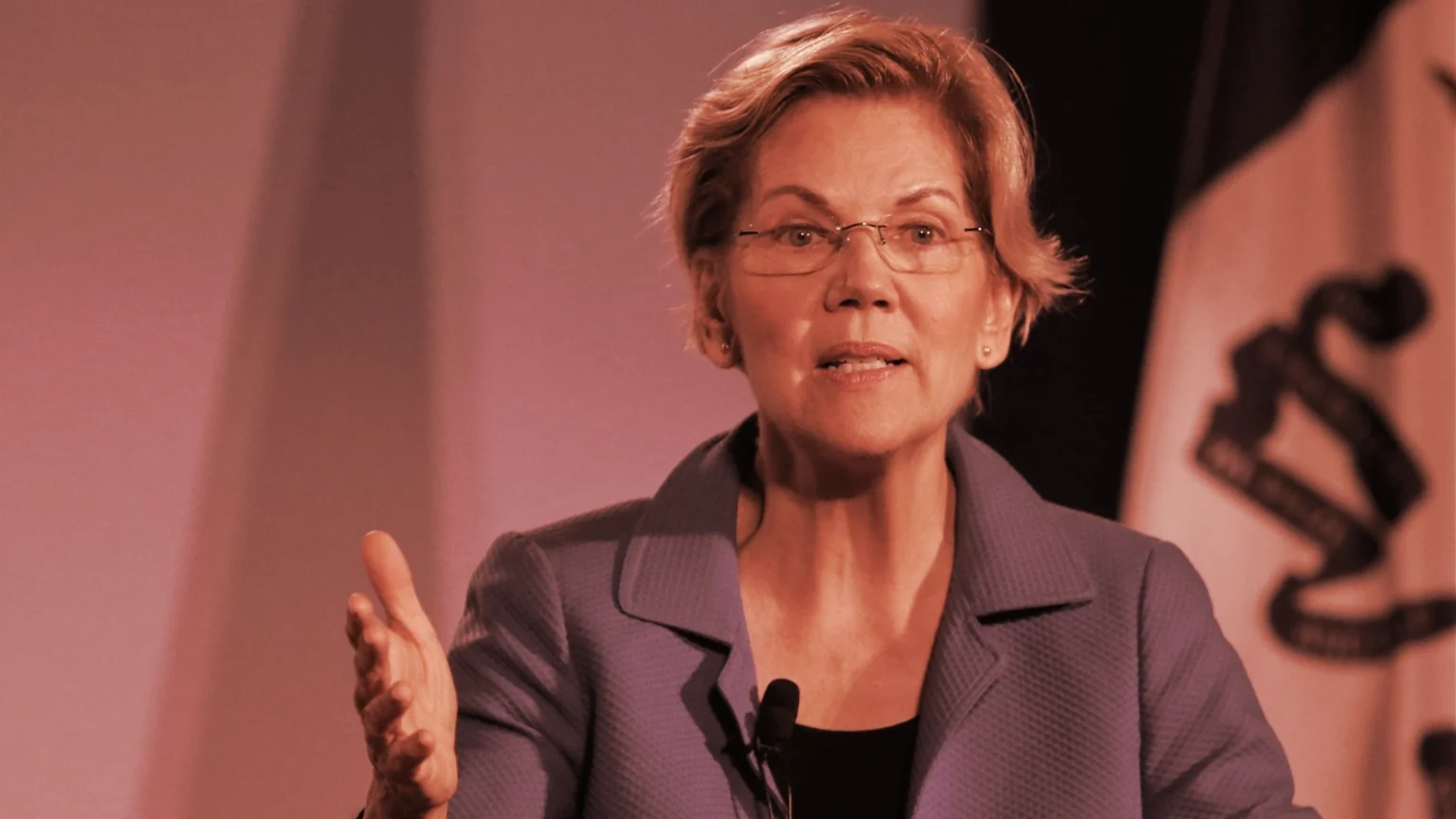CRIMINAL CAPITALI$M
Christine Duhaime: The wild FTX Ponzi scheme touched Vancouver

“When you bought Bitcoin on FTX, it seems they would “record” that you held Bitcoin on a scrap of paper somewhere, or as with other business records, on Signal’s auto-erasing text messaging app” | Image: stockcatalog, Creative Commons
One struggles to find the words to describe the FTX debacle.
It’s a wild story – a 30-year-old crypto dude who amassed a personal fortune of $25 billion in one year, and now is worth nothing! His crypto exchange, FTX, filed for bankruptcy in Delaware, with up to $30 billion missing.
“I f—ed up”, tweeted FTX CEO Sam Bankman-Fried, known as SBF, after the exchange collapsed. That hardly describes it.
Four people – SBF, his girlfriend Caroline Ellison, Zixiao Wang and Nishad Singh – controlled the whole house of cards. They apparently all lived together in a love nest in the Bahamas, played video games much of the time, and inter-dated with six other roommates.
The house of cards had two fictional rooms: one was the crypto exchange, FTX, and the other was Alameda Research LLC. SBF led FTX; the girlfriend led Alameda. To make it fun, they decided to create their own currency out of thin air called FTTs. As some Tik-Tokers have pointed out, the FTT stands for “facial tissue token” – nothing more than a Kleenex.
Many crypto dudes create tokens out of thin air and sell those puffs of air to innocent consumers, sometimes for upwards of $100 per puff. Crypto people call them tokens. In the real world, such things are called securities which, since 1933, can’t be sold to innocent consumers like candy but, well, should I say it? There are no securities law cops around in crypto.
You didn’t need a VPN to use FTX from Canada. When you bought Bitcoin on FTX, it seems they would “record” that you held Bitcoin on a scrap of paper somewhere, or as with other business records, on Signal’s auto-erasing text messaging app. Like that isn’t sketch.
SBF would hand the money sent by consumers over to his girlfriend at Alameda to spend. And, she spent. And spent. And spent. He did, too. Billions of dollars gone and things like private jets, luxury housing, fancy cars – the usual toys – started to be acquired. Even the Bahamas love nest was a luxury spend. This wasn’t profits, though, it was money owed to consumers of FTX that was supposed to be held in trust.
Here’s where the pieces of puff come into the picture.
As FTX sent billions of consumer funds over to the girlfriend at the Alameda entity, she would record it as a loan, backed by pieces of the Kleenex token – the FTT. So, they weren’t really short of funds when people like the due diligence gurus from the Ontario Teacher’s Pension Plan came to invest the pensions of Canadians into FTX because they had billions of pieces of Kleenex recorded. On a scrap of paper. Somewhere. Maybe even in auto-erased Signal messages.
The girlfriend spent some of that money right here in Vancouver, and the girlfriend’s company became the control person of a British Columbia issuer, although mysteriously I couldn’t see where that was disclosed to investors, as required. How she came to be approved to control a British Columbia public company is another mystery.
Alameda loaned $110 million to the British Columbia public company, Voyager Digital, another bankrupt crypto outfit where consumers lost their money. Voyager Digital is being sued in the U.S., and the plaintiffs are alleging that it was a crypto Ponzi scheme. A lawyer in Vancouver was its director.
A Ponzi scheme is a financial fraud that induces consumers to invest by promising returns from an allegedly legitimate business, where proceeds from new investors are paid to previous investors, cultivating the illusion of legitimacy, and inducing further investment. Ponzi schemes are presumptively insolvent from inception, as a matter of law, meaning that because they spent investor’s money (rather than protecting it as trust funds), they end up in bankruptcy.
The Ponzi scheme is named after Charles Ponzi. Over 101 years ago, in Boston, he ran a scheme similar to the FTT puff tokens which FTX sold, only he sold consumers illusive international reply mail coupons, that were also recorded on scraps of paper somewhere. The US Postal Service took him down after figuring out that the scheme was smoke and mirrors – Ponzi was just taking money from investors and giving them nothing in return. Sound familiar?
The wildness of FTX goes on and on. They had no board meetings, they didn’t know their own bank accounts, they have an audit firm that exists in the Metaverse’s Decentraland, they don’t know who works there or anyone’s terms of employment, employees were supplied with drugs.
The new bankruptcy team has said that they aren’t about to trust anything – statements, financials or records – from the FTX crypto dudes, including SBF. And who can blame them? Like all schemers, they lied to just about everyone, from start to finish.
SBF is said to be still at the love nest in the Bahamas presumably waiting for the FBI to show up.
Christine Duhaime is a financial crime expert with Fusion Intelligence.
Sam Bankman-Fried Cashed Out
$300M in Previous Funding Round:
WSJ
In a previously undisclosed detail, most of the
$420 million raised in October 2021 went directly
to Bankman-Fried, the Journal reported.
By Nelson Wang
Nov 18, 2022
"The Hash" panel discusses the parallels and differences between the implosions of crypto exchange FTX and the fall of the most infamous business fraud in American history – the Texas-based energy trading con Enron (ENE)
Former FTX CEO Sam Bankman-Fried personally received $300 million from a $420 million funding round for the company in October 2021, according to a Wall Street Journal report that cited FTX financial records it had reviewed, as well as people familiar with the transaction.
The arrangement was previously undisclosed, with Bankman-Fried telling investors at the time it was partially to reimburse him for money he’d spent to buy out Binance’s stake in FTX a few months earlier, the Journal reported.
In July 2021, Bankman-Fried bought out the approximately 15% of FTX owned by Binance, which was FTX’s first investor. Binance CEO Changpeng “CZ” Zhao tweeted this month that the amount of the buyout was $2.1 billion in Binance’s stablecoin BUSD and FTX’s exchange token FTT.
The October 2021 funding round valued FTX at $25 billion and raised money from financial heavyweights such as BlackRock, Tiger Global, Singapore’s sovereign wealth fund Temasek and Sequoia Capital. A few months later, some of those same investors helped raise $400 million for FTX's U.S. subsidiary at an $8 billion valuation.
According to the Journal, it was unclear what Bankman-Fried did with the $300 million, while FTX's 2021 audited financial statements said the money was being kept by the company for "operational expediency" on behalf of a "related party."
Read more: Temasek Says Its FTX Investment Is Now Worth Zero
Celebs like Tom Brady, Larry David did ads for crypto giant FTX. Now they're getting sued
November 19, 2022
By Megan Johnson
At its peak, crypto giant FTX was so big it attracted celebrities like tennis pro Naomi Osaka and actor Larry David to promote its brand. Now its collapse is shining a critical light on the industry — and pulling the stars into a lawsuit, too.
A legal complaint filed this week in Miami accuses now-bankrupt FTX and its CEO Sam Bankman-Fried of deceiving consumers into investing.
The lawsuit, which has yet to be certified, also names 12 celebrity “brand ambassadors” as defendants, including Osaka, David, quarterback Tom Brady, model Giselle Bündchen, basketball player Shaquille O’Neal and Canadian businessman Kevin O’Leary.
But the celebrity-studded legal complaint is just one chapter in the saga of Bankman-Fried’s collapsing crypto exchange, which filed for bankruptcy on Nov. 11.
The three-year-old empire — FTX, FTX.US and a trading firm called Alameda Research — once valued at $32 billion US, is fast becoming another cautionary crypto tale.

Bankman-Fried has been oscillating from regretful to defiant in tweets posted from his home in the Bahamas, saying he will raise $8 billion to fix FTX and then telling a Vox reporter, “F*** regulators [they] make everything worse.”
The details of the meteoric fall of FTX are emerging in the bankruptcy process.
20) I was on the cover of every magazine, and FTX was the darling of Silicon Valley.<br><br>We got overconfident and careless.—@SBF_FTX
John J. Ray, the new court-appointed CEO of FTX, says he has overseen many corporate failures in his 40-year career, including the liquidation of Enron, but said this week: “Never in my career have I seen such a complete failure of corporate controls and such a complete absence of trustworthy financial information as occurred here.”
London-based crypto blogger David Gerard spoke to CBC’s The Current on Friday and said Bankman-Fried came across as kind of a “nerdy, misunderstood trading genius.”
But behind the scenes bankruptcy filings now show FTX was shuffling money between entities — shoring each up with no backing, said Gerard.
“He knew he was broke. He was going out there nodding and smiling but knew FTX was a dead company,” Gerard told CBC.
As for the celebrity endorsements, Gerard said stars were likely well paid.

“It was a gig,” said Gerard.
And for investors, he said the draw was the promise “you could get rich for free. Who doesn’t want free money?”
FTX appeared strong and solvent, up until November.
But a balance sheet obtained first by the Financial Times and summarized in the Chapter 11 petitions in the U.S. Bankruptcy Court for the District of Delaware showed FTX had about $1 billion in cash or crypto currency backed by US dollars — which was offset by $9 billion US owed to customers.

Ray, the new court-appointed CEO, calls the FTX situation “unprecedented” and says the company was in the control of a “very small group of inexperienced, unsophisticated and potentially compromised individuals.”
He calls Bankman-Fried’s ongoing tweets “erratic and misleading public statements.”
All this has left the cryptocurrency industry reeling.
“The more that gets uncovered, the more in awe those of us in the industry are about just how much of a cluster f— … it’s just a complete mess,” said Brian Mosoff, CEO of Toronto-based Ether Capital.
Mosoff says this crash will leave investors fearful.
“You just have this monumental collapse of this enormous and well-respected entity seemingly overnight. Everyone’s a little blindsided,” said Mosoff.
Ironically, the ad Larry David filmed for FTX — in which his character is portrayed as foolish for rejecting crypto — now seems prescient.
The two-minute spot features David as a curmudgeonly character who travels through time, expressing disdain for inventions ranging from the wheel to coffee to the light bulb, insisting they’ll never catch on. At the end of the two-minute spot, he rejects FTX. Now David is accused of being culpable for Americans’ trust in FTX.
Celebs face damaged reputations
Dave Pouliot, lawyer and Montreal founder of Coinmiles, says he’s not sure if actors can be held accountable — but says they may think twice before endorsing another crypto-token-based venture.
“Their personal reputation risk is at stake here. I think these are actors, they’re being paid to endorse a brand publicly. So whether or not they could be found liable from a civil perspective, but reputational damage will be done. They are not likely to appear in another commercial of an investment nature,” said Pouliot.
His company does not take investor money, instead offering bitcoin rebates to users. But Pouliot says he’d like to see the industry moved to regulate itself, building in better protections and education.

Part of the problem with FTX, was how great its founder seemed.
Bankman-Fried is a former Massachusetts Institute of Technology physics student who had worked at Jane Street, an elite financial firm. After founding FTX he attracted top Silcon Valley investors and donated millions to politicians, pushing for regulatory change.
It was after the rival owner of the world’s largest exchange questioned FTX’s stability that cracks appeared.
There was a three-day panic sell-off costing FTX billions.
Binance head Changpeng Zhao considered buying FTX but fast backtracked, citing regulator concerns. But further industry regulation is futile, says Mosoff.
“You can tick off as many regulatory check boxes and paper filings as you want. If [bad actors] want to do something nefarious, they’ll find a way to do it,” said Mosoff.
Mosoff says the Mount Gox scandal — a Tokyo-based bitcoin exchange that imploded in 2014 — and Quadriga — the exchange whose founder Gerald Cotten died mysteriously in 2018 taking the keys to $250-million in crypto assets to the grave — did not scare people away for good.
He said the FTX saga will hopefully slow the flocks of “get-rich-quick” investors drawn by Bitcoin’s rise from $4,000 to a $70,000 high in 2020.
“People were blindly sending money in to buy these assets,” he said.
In the end, despite volatility, Mosoff believes when all the current drama shakes out, cryptocurrencies like bitcoin and ethereum will still retain their glitter.
FTX Latest: Firm Starts Asset
Review as Part of Chapter 11
(Bloomberg) -- FTX Trading Ltd. and about 100 affiliated companies are starting a strategic review of global assets as a part of the Chapter 11 bankruptcy process.
That comes after FTX said it fired three top deputies of former Chief Executive Officer Sam Bankman-Fried, the Wall Street Journal reported.
The collapse of the crypto empire is being transformed into a new political battlefront as Republicans highlight links between Democrats and their one-time benefactor Bankman-Fried.
Missouri Republican Senator Josh Hawley on Friday sent a broad request for correspondence between federal agencies and Democrats, including the Biden administration and the House and Senate Democrats’ campaign committees, regarding FTX and trading house Alameda Research. Hawley said he’s trying to determine whether Bankman-Fried’s more than $37 million in political donations to Democrats may have created pressure on regulators to be lenient with the former crypto executive.
Meanwhile, the chair of a House panel is asking FTX to turn over documents and information by Dec. 1 as part of its investigation into the collapse of the crypto platform.
Key stories and developments:
FTX Bankruptcy Bombshells Squeeze Crypto Lenders Behind Bull Run
Wall Street Beat: FTX Lesson for Taking Funds by Debt and Tokens
FTX’s Point of No Return Was Ellison’s Tweet, Trade Data Show
Bankman-Fried’s Island Haven Draws Scrutiny After FTX Demise
FTX Existential Crisis Fix; TMT’s Mega-Cap Problem (Podcast)
(Time references are New York unless otherwise stated.)
FTX Starts Global Asset Review as Part of Chapter 11 (3:18 a.m.)
FTX Trading Ltd. and about 100 affiliated companies are starting a strategic review of global assets as a part of the Chapter 11 bankruptcy process.
“Based on our review over the past week, we are pleased to learn that many regulated or licensed subsidiaries of FTX, within and outside of the US, have solvent balance sheets, responsible management and valuable franchises,” FTX Group’s new Chief Executive Officer John J. Ray III said in a statement.
The FTX companies, known as FTX Debtors, have engaged Perella Weinberg Partners LP as lead investment bank and started preparing some assets for sale or reorganization, according to the statement.
FTX Japan to Develop System for Withdrawals: Asahi (11:54 p.m.)
The Japan unit of FTX has started developing a system that will enable customers to withdraw their funds, the Asahi newspaper reported Saturday, citing company executive Seth Melamed.
FTX Fires Sam Bankman-Fried’s Top Deputies, WSJ Reports (10:07 p.m.)
FTX said it fired three top deputies of former Chief Executive Officer Sam Bankman-Fried, the Wall Street Journal reported.
FTX co-founder and chief technology officer Gary Wang, engineering director Nishad Singh and Caroline Ellison, who ran Alameda Research, were terminated from their positions, the paper said, citing an FTX spokeswoman late Friday. The paper didn’t say if it attempted to reach the executives for comment.
They left those roles after FTX appointed John J. Ray to oversee the bankruptcy, according to the report. The newspaper had previously reported that the executives were aware of the decision to send client money to trading firm Alameda.
Hawley Seeks Democrats’ Emails as FTX Collapse Turns Political (4:04 p.m.)
The collapse of the crypto empire founded by political mega-donor Sam Bankman-Fried is being transformed into a new political battlefront as Republicans highlight links between Democrats and their one-time benefactor.
Missouri Republican Senator Josh Hawley on Friday sent a broad request for correspondence between federal agencies and Democrats, saying he’s trying to determine whether Bankman-Fried’s more than $37 million in political donations to Democrats may have created pressure on regulators to be lenient with the former crypto executive.
Short Sellers Jump on Crypto Stocks Despite Steep Cost of Wagers (2:44 p.m.)
Short sellers have pounced on crypto-focused equities as the digital-assets space crumbles in the wake of FTX’s public implosion.
Crypto stocks are nearly three times more shorted than the average share, even as short sellers are paying almost eleven times as much in financing costs to bet against them, according to data compiled by Ihor Dusaniwsky and Matthew Unterman at S3 Partners.
Traders banking on losses in a handful of crypto stocks, including Block Inc., Coinbase Global Inc., MicroStrategy Inc. and five others, added $55 million worth of new shorts in the week through Friday, according to S3’s analysis. Total crypto short interest for these eight stocks is more than $4.5 billion.
Silvergate Shares Slide as FTX Fallout Attracts Short Sellers (1:16 p.m.)
Silvergate Capital Corp. shares slumped, putting them on pace to lose a quarter of their value this week, as investors punished the bank for its ties to bankrupt FTX.
Shares of the company, which held deposits for FTX, dropped 9.9% to $25.14 at 1:03 p.m. in New York. Thursday’s nearly 11% drop triggered a short-sale circuit breaker. Data from S3 Partners indicates short interest levels in Silvergate are around 11% of the shares available for trading.
FTX Looks at Years of Lawsuits to Recover Billions From Customers (1:12 p.m.)
FTX’s bankruptcy opens the door to creditors’ likely lawsuits looking to claw back billions of dollars in assets that customers and insiders withdrew before the crypto company’s abrupt Chapter 11 filing.
As the company’s advisers scramble to get a handle on its finances, they’ll have a slate of bankruptcy tools available that will allow them to try to wrangle funds back into the FTX empire to try to pay all creditors, though the efforts will likely take years.
Crypto Fallout Leaves US Retiree Benefits Mostly Unscathed (12:35 p.m.)
Most of the largest US state and local government pension funds have dodged the ongoing fallout from the collapse of crypto exchange FTX by not directly investing in digital tokens. For the pensions that have dipped into the risky asset class, the investments represent just a small amount of the retirement funds’ portfolio, and much of the limited exposure is indirect via crypto-related stocks or other investment products.
Nearly all of the top 10 US pension funds by assets said they are not invested in Bitcoin or any other cryptocurrencies, according to an informal survey by Bloomberg.
House Panel Seeks Documents in Investigation on FTX Blowup (11:13 a.m.)
The chair of a House panel is asking FTX to turn over documents and information by Dec. 1 as part of its investigation into the collapse of the once-prominent crypto platform.
“FTX’s customers, former employees, and the public deserve answers,” said Representative Raja Krishnamoorthi, chairman of the House Oversight Subcommittee on Economic and Consumer Policy, in a Friday letter to former FTX CEO Sam Bankman-Fried and John J. Ray III, the new CEO and chief restructuring officer who oversaw the liquidation of Enron Corp.
He requested details on the circumstances surrounding the crypto firm’s spiral into bankruptcy last week, including an explanation of the company’s liquidity issues, how those issues of the Bahamas-based parent company affected its US arm, and details of how customer funds were being used. The subcommittee is also seeking internal documents and communications.
FTX Auditor Defends Work as New CEO Blasts Financials (10:57 a.m.)
The auditors of FTX Trading Ltd. are defending their work, even after the new management of the imploded crypto exchange lambasted the auditors in a stunning bankruptcy filing.
“We believe the financial statements of FTX Trading Ltd. as of 12/31/21 were fairly stated and we stand behind our audit opinion,” New York-headquartered accounting firm Prager Metis CPAs LLC said in a statement to Bloomberg Tax.
--With assistance from Stephen Stapczynski.
Most Read from Bloomberg Businessweek
A Nation in the Crosshairs of Climate Change Is Ready to Get Rich on Oil
Fatal Crashes Highlight Rising Danger of Illicit Charter Flights
North America’s EV Future Hinges on a North Carolina Turtle Pond
©2022 Bloomberg L.P.










 Sam Bankman-Fried, the former chief executive of the cryptocurrency exchange FTX, which collapsed into bankruptcy.Credit...Erika P. Rodriguez for The New York Times
Sam Bankman-Fried, the former chief executive of the cryptocurrency exchange FTX, which collapsed into bankruptcy.Credit...Erika P. Rodriguez for The New York Times